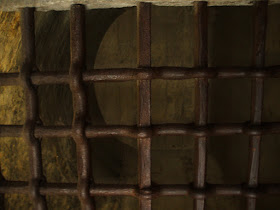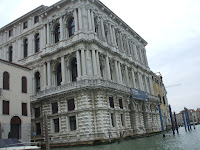 |
| The clock tower |
ABOUT THE CLOCK TOWER - The Clock Tower in Venice is an early renaissance building on the north side of the Piazza San Marco at the entrance to the Merceria. It comprises a tower, which contains the clock, and lower buildings on each side. Both the tower and the clock date from the last decade of the 15th century, though the mechanism of the clock has subsequently been much altered. The clock was completed in 1490.
WHY IN ITS LOCATION? - It was placed where the clock would be visible from the waters of the lagoon and give notice to everyone of the "wealth and glory" of Venice (because it's pretty ornate).
THE 2 FIGURES ATOP THE CLOCK - There are 2 large bronze figures on a terrace at the top of the tower and they strike the hours on a bell. They are figures of a young and old shepherd wearing sheepskins. They're known as "the Moors" because of the dark patina acquired by the bronze. The bell is also original and is signed by one Simeone who cast it at the Arsenal in 1497.

THE CLOCK FACE - The face of the clock is in blue and gold inside a fixed circle of marble engraved with the 24 hours of the day in Roman numerals. A golden pointer with an image of the sun moves round this circle and indicates the hour of the day. Within the marble circle beneath the sun pointer are the signs of the zodiac in gold (from the 1490s), which revolve slightly more slowly than the pointer to show the position of the sun in the zodiac.
In the middle of the clock face is the Earth (in the center) and the moon, which revolves to show its phases, surrounded by stars which are fixed in position. The background is of blue enamel.
 |
| Tom, Rosanna and Rob in the rainy Piazza San Marco |
MANY ALTERATIONS IN 500 YEARS - This clock went through a lot of transitions. There were decorative things attached to it and then removed from it over the last 600 years. The latest repairs and alterations were done 10 years ago in 2006
NEXT: Piazzetta (marked by two large columns where people come in by boat);
AND THEN: The Old Library (Libreria Sansovinian)















































